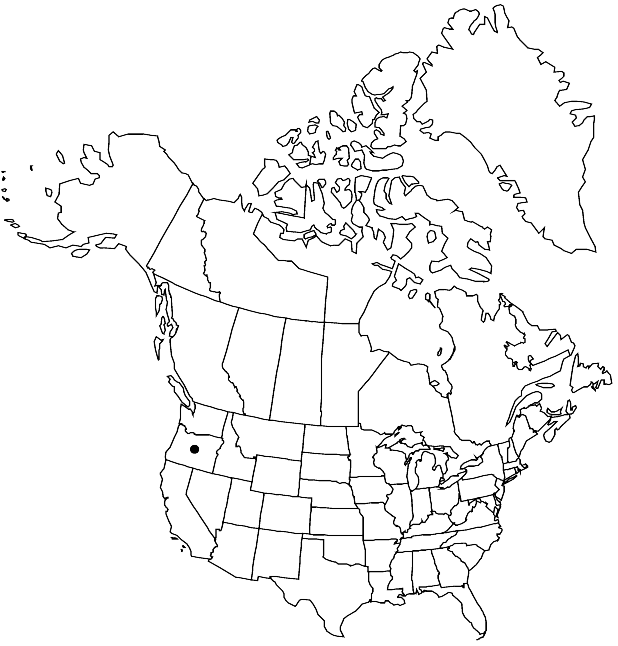Boechera horizontalis
Harvard Pap. Bot. 11: 266. 2007.
Perennials; long-lived; (cespitose); apomictic; caudex woody. Stems usually 1 per caudex branch, arising from center of rosette, near ground surface or somewhat elevated on woody base, or 1–3.5 dm, sparsely pubescent proximally, trichomes short-stalked, 3–6-rayed, 0.1–0.3 mm, glabrous distally. Basal leaves: blade narrowly oblanceolate, 1–5 mm wide, margins entire, ciliate near petiole base, trichomes (simple), to 0.4 mm, surfaces densely pubescent, trichomes short-stalked, 3–6-rayed, 0.1–0.3 mm. Cauline leaves: 3–13, often concealing stem proximally; blade auricles 0.5–1.5 mm, surfaces of distalmost leaves glabrous. Racemes 5–32-flowered, usually unbranched. Fruiting pedicels horizontal to descending, straight or slightly curved downward, 4–11 mm, glabrous. Flowers divaricate-ascending at anthesis; sepals pubescent; petals lavender to purple, 5–6 × 1.5–2 mm, glabrous; pollen spheroid. Fruits horizontal or descending, not appressed to rachis, secund, straight, edges slightly undulate (not parallel), 2–4 cm × 2–3 mm; valves glabrous; ovules 40–54 per ovary; style 0.2–0.5 mm. Seeds uniseriate, 2–2.5 × 1.7–2 mm; wing continuous, 0.5–1 mm wide.
Phenology: Flowering Jul–Aug.
Habitat: Dry pumice slopes
Discussion
Morphological evidence suggests that Boechera horizontalis is an apomictic species that arose through hybridization between B. lemmonii and B. suffrutescens (M. D. Windham and I. A. Al-Shehbaz 2007). Boechera horizontalis is known only from the vicinity of Crater Lake in south-central Oregon.
Selected References
None.
Lower Taxa
"elongated" is not a number."thick" is not a number."dm" is not declared as a valid unit of measurement for this property.
